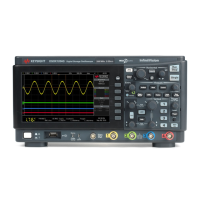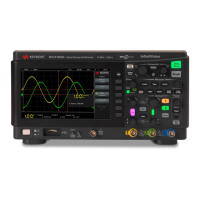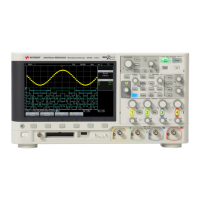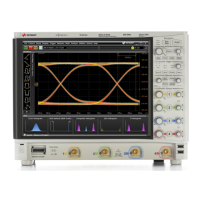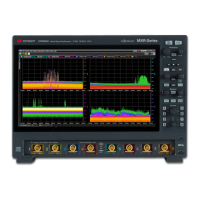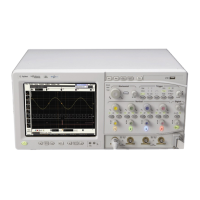164 Keysight InfiniiVision HD3-Series Oscilloscopes User's Guide
12 Acquisition Control
However, digital signals have frequency components above the fundamental
frequency (square waves are made up of sine waves at the fundamental frequency
and an infinite number of odd harmonics), and typically, for 500 MHz bandwidths
and below, oscilloscopes have a Gaussian frequency response.
So, in practice, an oscilloscope's sample rate should be four or more times its
bandwidth: f
S
= 4f
BW
. This way, there is less aliasing, and aliased frequency
components have a greater amount of attenuation.
Note that 1 GHz bandwidth HD3-Series oscilloscope models have more of a
brick-wall type frequency response than the Gaussian response of lower
bandwidth HD3-Series oscilloscope models. To understand the characteristics of
each type of oscilloscope frequency response, see Understanding Oscilloscope
Frequency Response and Its Effect on Rise-Time Accuracy, Keysight Application
Note 1420 (http://literature.cdn.keysight.com/litweb/pdf/5988-8008EN.pdf).
See Also Evaluating Oscilloscope Sample Rates vs. Sampling Fidelity: How to Make the
Most Accurate Digital Measurements, Keysight Application Note 1587
(http://literature.cdn.keysight.com/litweb/pdf/5989-5732EN.pdf)
Oscilloscope Rise Time
Closely related to an oscilloscope's bandwidth specification is its rise time
specification. Oscilloscopes with a Gaussian-type frequency response have an
approximate rise time of 0.35/f
BW
based on a 10% to 90% criterion.
Figure 28 Sample Rate and Oscilloscope Bandwidth
Limiting oscilloscope bandwidth (f
BW
) to 1/4 the sample rate (f
S
/4)
reduces frequency components above the Nyquist frequency (f
N
).
f
S
f
N
f
S
/4
-3dB
Attenuation
Aliased frequency
components
Frequency
0dB
